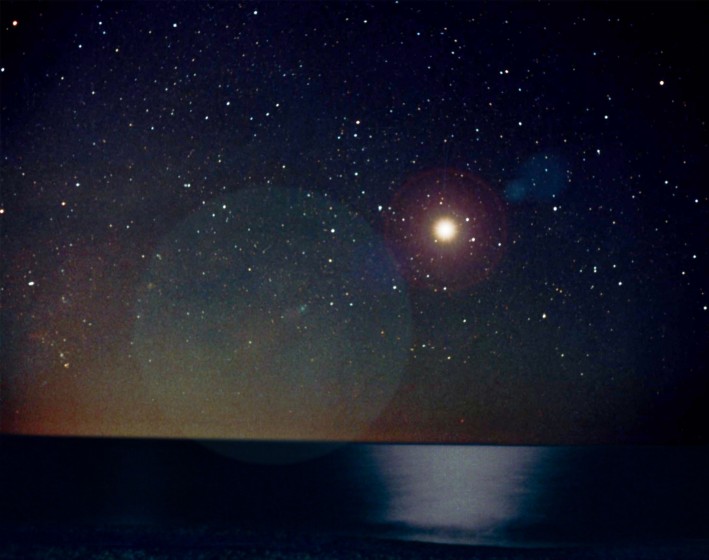
|
Credit & Copyright: Tunc Tezel
Explanation:
A new star, likely the
brightest supernova in recorded
human history,
appeared in planet Earth's sky about 1,000 years ago today,
in 1006 AD.
The expanding debris cloud
from the stellar explosion
is still visible to modern
astronomers, but what did the supernova look like in 1006?
In celebration of the millennial anniversary of SN1006,
astronomer Tunc Tezel
offers this intriguing suggestion, based on a photograph
he took on February 22, 1998 from a site overlooking
the Mediterranean south of Antalya, Turkey.
On that date, bright Venus and a waning crescent Moon
shone in the early morning sky.
Adopting
calculations
which put the
supernova's
apparent brightness
between Venus and the crescent Moon,
he digitally superposed an appropriate new star in the picture.
He placed the star at the supernova's position in the
southerly constellation of Lupus
and used the water's reflection
of moonlight in the final image.
|
January February March April May June July August September October November December |
| ||||||||||||||||||||||||||||||||||||||||||||||||
NASA Web Site Statements, Warnings, and Disclaimers
NASA Official: Jay Norris. Specific rights apply.
A service of: LHEA at NASA / GSFC
& Michigan Tech. U.
Based on Astronomy Picture
Of the Day
Publications with keywords: supernova - magnitude
Publications with words: supernova - magnitude
See also:
- APOD: 2023 October 11 Á NGC 1097: Spiral Galaxy with Supernova
- APOD: 2023 July 9 Á Doomed Star Eta Carinae
- APOD: 2023 May 22 Á Supernova Discovered in Nearby Spiral Galaxy M101
- Supernova Cannon Expels Pulsar J0002
- SN Requiem: A Supernova Seen Three Times So Far
- NGC 7814: Little Sombrero with Supernova
- Supernova in NGC 2525
